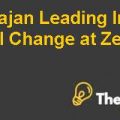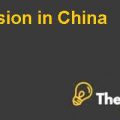Warren E. Buffett Case Study Solution
DCF Valuation Method:
Another method to determine the enterprise value of PCP is the DCF Valuation Method. Under this method, projected cash flows for the period of 10 years are calculated for PCP by using the net cash flow of 2015 and a growth rate of cash flows of 2.5%. Net cash flow for 2015 is calculated by using the financial statements of PCP provided in the case. On the basis of 10 year cash flows and at a discount rate of 4.8%, the Enterprise Value of PCP is $20818 with an equity value of $15918. On the basis of these findings, the premium paid by Warren Buffet is equals to $16382 that is approximately 79% of the enterprise value of PCP. These findings implies that the decision taken by Warren to acquire PCP at a 21% premium was highly overvalued. But, as the findings are based on 10 year cash flows, therefore, the findings could not be considered accurate for estimating the true value of the Warren’s investment.
Perpetuity Valuation Method:
Perpetuity valuation method could be proved optimal to estimate the true value of PCP as it considers infinite cash flows rather than cash flow for a particular time period i.e. 10 years. Moreover, with an investor like Warren Buffet, who has a track record of long term investments, perpetuity method could provide more accurate results than the DCF Valuation. Enterprise value under the perpetuity method is calculated by using the perpetuity growth formula. Under perpetuity valuation, the enterprise value of PCP is $110293 with an equity value of $105393. On the basis of these findings and the 37200 purchasing price, the return on investment for Warren Buffet is equals to 66%. This implies that the PCP is purchased at a discount of 66% rather than a premium of 21%.
Note: All calculations are provided in the attached excel sheet and a summary of findings of all of the three methods is provided in the Appendix 2.
Conclusion
On the basis of above analysis, including the company analysis itself and the analysis of PCP by using various valuation methods it could be concluded that the decision of Warren Buffet regarding the acquisition of PCP is an optimal decision taken by Warren Buffet. Although, both of the methods i.e. the DCF Valuation and the Multiple valuation, shows that the premium paid is even more than the estimates i.e. 79% and 23% respectively but, the calculations under both of these methods are done on the basis of certain assumptions and could not be considered as optimal as the perpetuity method which proves that efficiency of the investment decision taken by Warren Buffet with a 66% rate of return.
Appendices
Appendix-1: SWOT Analysis
| SWOT Analysis | |||
| Strengths | Weaknesses | Opportunities | Threats |
| · largest cotton producer
· Diversified portfolio · strong investment philosophy · Focus on market research |
· Portfolio Management
· Standard of Product Quality |
· Investment in risky assets
· Expansion in new markets
|
· High competition
· Reduction in the market value and share price |
Appendix-2: Summary of Findings
| Summary of Findings | |||
| Multiple Valuation | DCF Valuation | Perpetuity Valuation | |
| Enterprise Value PCP | 30195 | 20,818 | 110293 |
| Return (Premium) On Investment | -23% | -79% | 66% |
This is just a sample partical work. Please place the order on the website to get your own originally done case solution.
How We Work?
Just email us your case materials and instructions to order@thecasesolutions.com and confirm your order by making the payment here













